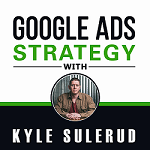Let’s define some need-to-know YouTube Ads terms!
I want to make sure you know what other people are talking about OR you know what you are talking about when it comes to YouTube Ads.
Structural Terms:
Campaign – A broad umbrella that is in your account. It’s the highest level hierarchy, and inside a campaign you can have one or multiple different ad groups (see below). You can have multiple campaigns inside an account. Each campaign will have its own budget and its own location targeting. You would also have different campaigns for video ads and search ads and display ads.
Ad Groups – Ad groups are found inside campaigns and this is where you’re going to define your targeting and put your ads. You can put different ads in each ad group or you can put the same ad in each ad group, but this is where your targeting and ads are going to live.
Metrics:
Impressions – The number of times your ad is seen by someone – someone saw the ad at least briefly.
View – This is when someone watches at least 30 seconds of an ad. Or if your ad is shorter than 30 seconds, if they watch the entire ad, that would also count as a view. If someone clicks on your ad before 30 seconds, that also counts as a view.
View Rate – Number of views divided by the number of impressions. Out of all of the times someone saw a fraction of your ad, how many of them actually saw at least 30 seconds of it? On YouTube, view rates can vary greatly depending on your targeting and on your ad. Usually, you’d want to see a view rate between 15-25%.
CPM (Cost per 1,000 impressions) – M stands for mille (1,000 in Latin). CPM is the cost for every 1,000 impressions of your ad.
CPV (Cost Per View) – Total cost divided by the total number of views = average cost per view. Some views may have cost more and some may have cost less. The average just shows you exactly that, the average.
CPC (Cost Per Click) – Total cost divided by the total number of clicks = average cost per click.
CPA (Cost Per Action) – Total cost divided by the total number of actions (more commonly referred to as conversions).
Conversion – Some action you are tracking in your account. This could be an opt-in, purchase, or even a page view. Really, you’re telling Google what these conversions are and then they just report them for you. As long as you’re tracking conversions, you’ll be able to see a conversion rate.
Conversion Rate – Number of conversions divided by the number of interactions.
Interaction – Depends on the campaign type. In a Google Search campaign, an interaction is considered a click. In a Google Video campaign (YouTube Ad campaign), an interaction is a view.
Conversion rate – The number of conversions divided by the number of views. This is generally a pretty low number and not very helpful. What you can do instead is set up a custom column inside your account dashboard and you can set it up to report the number of conversions divided by the number of clicks. This is much more helpful as it will give you the opt-in conversion rate or the sales conversion rate.
Conversion value – This is something that you set up so when you are defining your conversions, you can attach a value to them – either the same value for each conversion or it could be dynamic based on the actual purchase price of somebody’s order on your website. When you’re setting up conversion value, I’d recommend not assigning values to opt-ins or lower-level conversions. We actually only want to assign a value to a purchase. Then, you can see how profitable your campaigns actually are, you can see which campaigns, which targeting options, etc. are actually leading to sales and higher conversion values.
A Few More Definitions
CTA (Call to action) – Tells people what to do; calls them to take some sort of action. When you’re setting up a YT ad, there will be a component of it called a CTA button. This is where you can put some text (not a lot – only 10 characters) on a button telling people what to do.
Landing page – A page on a website where you are sending traffic – this can be anything. It doesn’t have to be some special kind of landing page design. Yes, of course, certain layouts and designs work better than others. But, by definition, a landing page is just whatever page of the website you are linking to from your ad that people are landing on after they click.
Remarketing – A term unique to Google Ads. All it really means is retargeting – showing ads to people who have already been to your website or have already watched your YouTube videos. You can run remarketing ads to those people.
Remarketing list – A list you need to define; you need to tell Google the criteria to use in order to put people on this list. So maybe it is everyone who has visited your website within the past 60 days or maybe it’s everyone who has visited a specific page on your website within the last seven days. Or maybe it’s anyone who has subscribed to your YouTube channel.
Scale/Scaling – Scaling an account is what we do when things are working really well and we want to invest more and increase the ad spend.
So that’s it! Those are some need-to-know terms that will bring your YouTube Ads understanding up to par.
